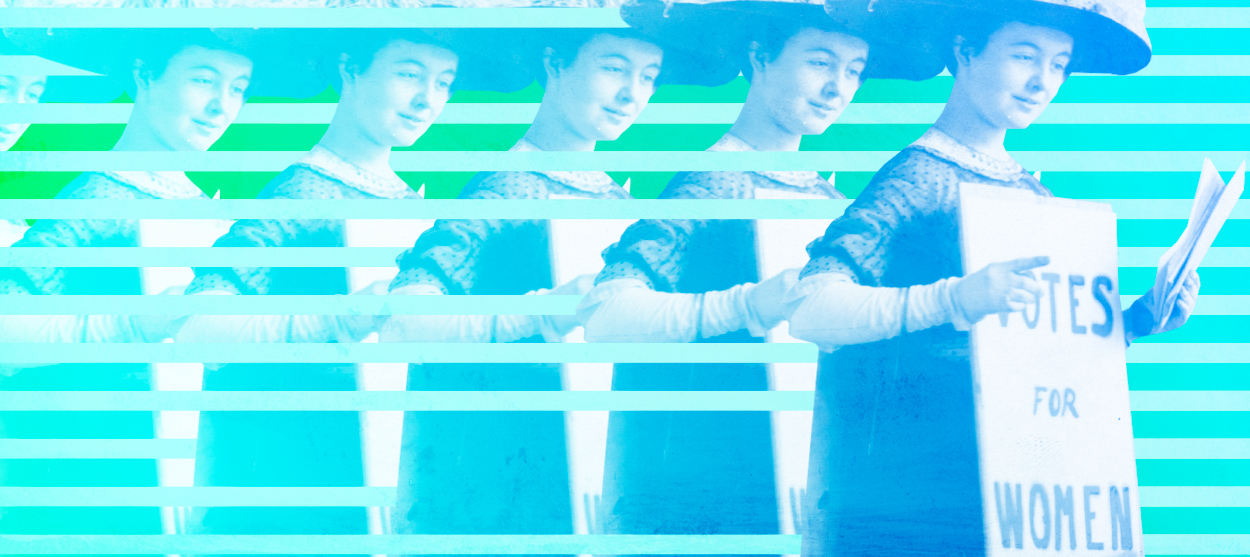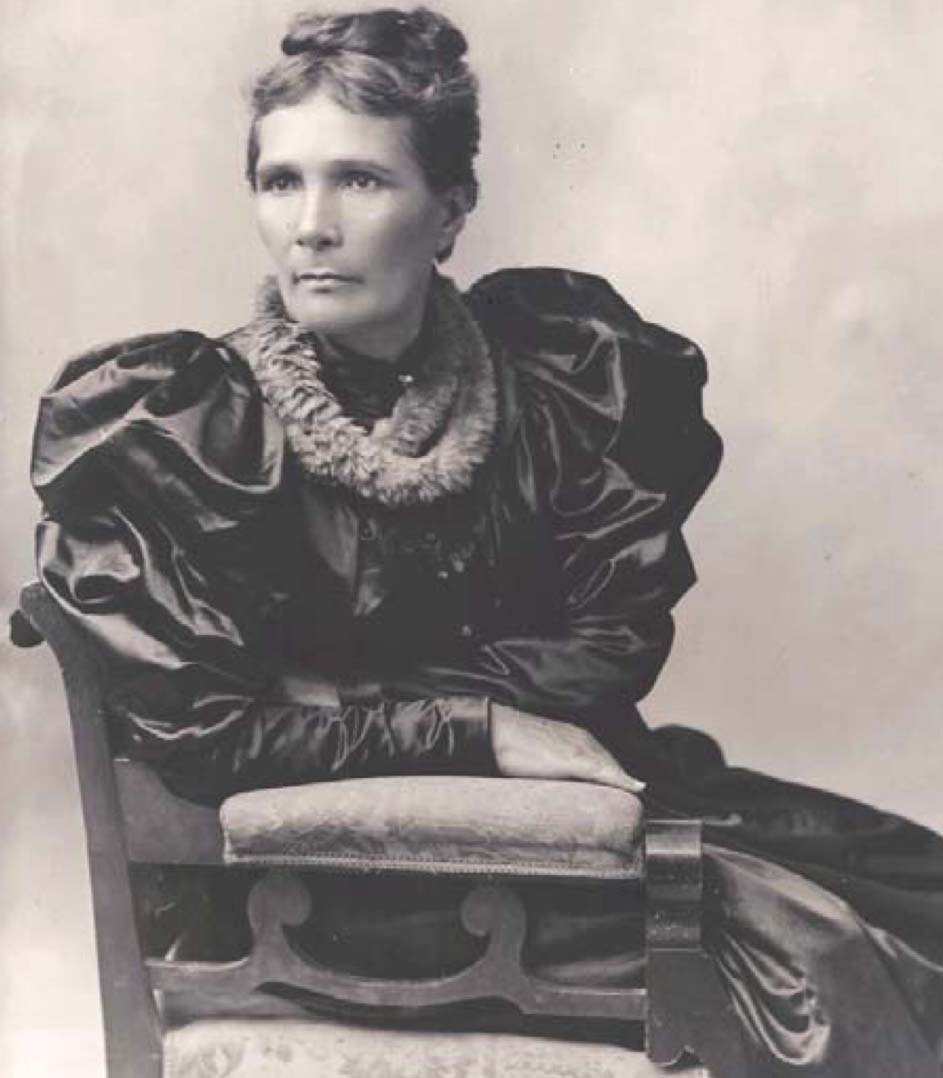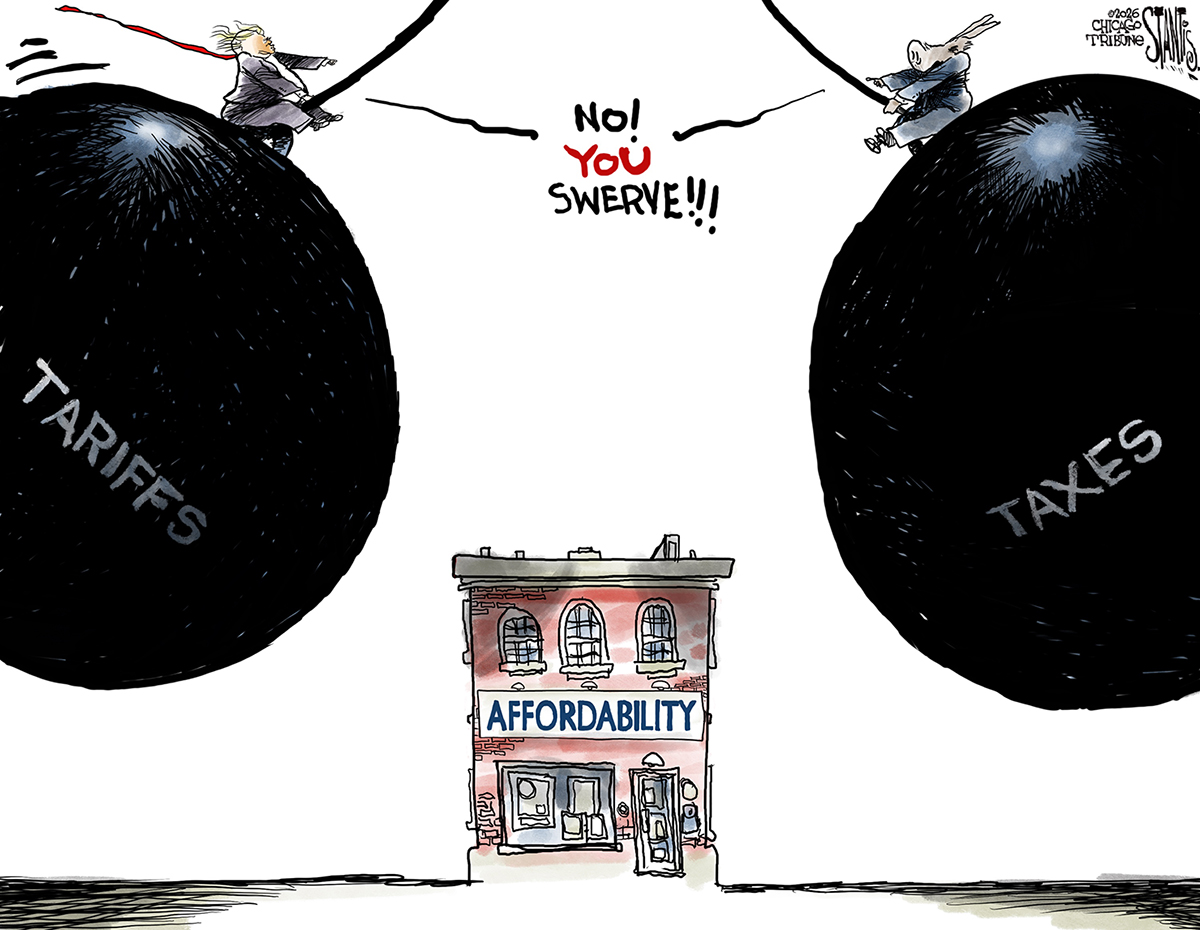5 important suffragists you didn't learn about in school
100 years after the 19th Amendment was passed, these women's stories continue to inspire


At some point along the line, the women's suffrage movement in the United States became — well, boring. "It is so often described in a way that makes it seem kind of dowdy and dour — whereas in fact it is exciting and radical," historian Kate Clarke Lemay recently told The New York Times. "Women staged one of the longest social reform movements in the history of the United States. This is not a boring history of nagging spinsters; it is a badass history of revolution staged by political geniuses."
But learning about the suffrage movement in school might mean the conversation is limited to Susan B. Anthony, Elizabeth Cady Stanton, Alice Paul, and maybe Ida B. Wells-Barnett and Sojourner Truth if you were lucky. Yet the right to vote was fought for by thousands of lesser-known women who were just as important in securing the ratification of the 19th Amendment on this day, 100 years ago — and sadly, in many cases, had to keep fighting for long after 1920.
The struggle for voting rights didn't end in the early 20th century; it very much lives on today. But to celebrate those who demanded that crucial leap, here are five inspiring suffragists who might have been left out of your classroom.
The Week
Escape your echo chamber. Get the facts behind the news, plus analysis from multiple perspectives.

Sign up for The Week's Free Newsletters
From our morning news briefing to a weekly Good News Newsletter, get the best of The Week delivered directly to your inbox.
From our morning news briefing to a weekly Good News Newsletter, get the best of The Week delivered directly to your inbox.
Zitkála-Šá

When the 19th Amendment was ratified in 1920, Indigenous suffragist Gertrude Simmons Bonnin — whose Lakota name was Zitkála-Šá — was one of many who reminded her white counterparts that the battle was not yet entirely won. It wouldn't be until four years later, when Congress at last granted citizenship to Native Americans, that Indigenous women would be able to join white women in voting (although many states still enacted laws preventing Native American voters).
The suffrage movement in America, though, was in part "inspired by the matriarchal traditions of Native people," historian Cathleen D. Cahill has explained for the Times. Feminists "especially looked to Haudenosaunee (or Iroquois) women's power to appoint male political leadership, control their property, and have custodial rights to their children — those were legal rights white women did not have." For Bonnin, who was born to a Sioux mother and white father in 1876, just four months after the Battle of Little Bighorn, the right to vote was inextricably linked to the urgency for Native Americans to have a voice in the U.S. government.
Bonnin was also a prolific writer of articles and books about her childhood and culture; she even wrote a "romantic Indian opera," The Sun Dance, based on what was then an outlawed "heathenish" ceremony, the American Music Research Center notes (Native Americans wouldn't receive the right to religious freedom until 1933). And even after the right to vote was finally extended to Indigenous Americans, Bonnin continued to advocate for voters, founding the National Council of American Indians in order to unify the diverse voices of Native Americans across the country.
A free daily email with the biggest news stories of the day – and the best features from TheWeek.com
Despite being relatively forgotten after her death, anthropologist Omer Stewart has maintained she was "one of the most powerful women who ever lived in the United States."
Emma Ka'ilikapuolono Metcalf Beckley Nakuina

Like the Indigenous Americans back in the contiguous United States, Hawaii had a tradition of female leadership that predated white settlers — and their forms of government. Queen Lili'uokalani was elected in 1891 only to be overthrown in a coup d'état by American and European businessmen who then prevented women in the islands from voting. Emma Ka'ilikapuolono Metcalf Beckley Nakuina — who was born in Kaua'ala in 1847, highly educated, and specialized in resolving issues with water rights up until the overthrow, earning her the title of Hawaii's first female judge — was one such woman to lose her ability to vote.
Nakuina wasn't going to sit around, though. After the overthrow, she began organizing with other women (including another notable leader, Wilhelmina Dowsett) to promote the women's right to vote. Nakuina "hosted social gatherings of nationally acclaimed women's suffragists," and wrote numerous columns advocating for women to have a say in the government just as much as men. The islands — then just a territory, and unable to formally contribute to ratifying the 19th Amendment — became a pivotal site for the suffrage movement nonetheless.
For Nakuina, it was never just about the right to vote; it was what women could accomplish with it. "This was a way to have a voice again in determining Hawaii's future, and determining the rights of the people," Healoha Johnston, the curator of women's cultural history at the Smithsonian's Asian Pacific American Center, explained. "There's this recognition that, political power will come after the vote. This is just step one."
Mabel Ping-Hua Lee

Mabel Ping-Hua Lee got an early start as an activist, joining a suffrage parade up Fifth Avenue in New York City in 1912 when she was only 16. Due to racist policies at the time, though, she was not actually a U.S. citizen, despite having immigrated to the United States from Canton (today, Guangzhou) when she was five. Her fight for the right to vote, then, was also a fight to be recognized by a country that at the time formally excluded Chinese immigrants.
Just as white suffrage leaders were interested in bringing Native American feminists into their fold for insight into tribal governments that included women, they were also interested in the Chinese revolution of 1911; American suffragists were "glad, but irritated, too" that women in China earned the right to vote before them, historian Cathleen D. Cahill explains for Women's Vote Centennial. Mabel Lee, then, was invited, along with other leaders in New York's Chinatown community, to join the mainstream suffrage movement; as Cahill adds, despite not being eligible to become citizens themselves, Lee and the others still "cared about women's rights."
Despite having been a major leader in the movement, including helping to lead a parade in 1917 of 100,000 marchers in New York, it would take almost another 25 years for Lee herself to be allowed to vote, following the repeal of the Chinese Exclusion Act in 1943.
Nellie Cashman

Why isn't there a movie about Nellie Cashman yet? In addition to being known by the fantastic nickname, "the Angel of Tombstone," and described by her biographer as "pretty as a Victorian cameo and, when necessary, tougher than two-penny nails," Cashman was a no-nonsense miner and restaurateur who made her way from Ireland, where she was born, to Boston, where she settled, to the American west — at the urging of General Ulysses S. Grant.
In 1898, Nellie headed north in the Klondike gold rush, setting up shop in Dawson before moving to Alaska, where she operated the northernmost gold mine in the world. She became the territory's first-known woman voter in 1912, at the age of 68, when she strutted into the polling booth in Nolan, Alaska, and cast a ballot — a full year before women in Alaska would be allowed to vote (and still years before native Alaskans could).
"It is unknown if Nellie knew of the suffrage amendment that Congress included in Alaska's Second Organic Act," writes Alaska State Museums, "or if she simply asserted her right to vote by practicing it." Either way, as a 1921 Sunset magazine put it: "Miss Cashman was a feminist long before the coining of the word."
Carrie Langston
Kansas has an impressive legacy of "female political leadership and suffrage," Kansas City's KCUR notes, and counted among those notable women is Caroline "Carrie" Mercer Langston, the mother of Harlem Renaissance poet Langston Hughes. While her son is better remembered by history, Carrie was an activist who fought for women's right to vote, picking up where her father, who was also a suffragist, left off.
"Impulsive and vibrant," Carrie Langston pushed back on conventions of the day, penning an article in 1892 that refuted the "male notion" that women are content with their positions in life, and later enrolling Langston Hughes in an all-white school, appealing before the Topeka school board after the principal initially refused to admit him, and winning.
As the Moneka Women's Rights Association would say in 1858, "Kansas cannot be truly free while the words 'white' or 'male' are found within the limits of her Constitution." The state would be the first in the country to allow women to vote in school elections in 1861 — a major milestone — and the first state to hold a referendum on women's suffrage in state election in 1867. While there are certainly better known suffragists, Carrie Langston helped get the work done. It is because of the thousands of women like her across the country, who fought locally to be taken seriously as a political force, that 100 years on, we can now celebrate the centennial of the right to vote.
Jeva Lange was the executive editor at TheWeek.com. She formerly served as The Week's deputy editor and culture critic. She is also a contributor to Screen Slate, and her writing has appeared in The New York Daily News, The Awl, Vice, and Gothamist, among other publications. Jeva lives in New York City. Follow her on Twitter.
-
 Political cartoons for January 18
Political cartoons for January 18Cartoons Sunday’s political cartoons include cost of living, endless supply of greed, and more
-
 Exploring ancient forests on three continents
Exploring ancient forests on three continentsThe Week Recommends Reconnecting with historic nature across the world
-
 The rise of the spymaster: a ‘tectonic shift’ in Ukraine’s politics
The rise of the spymaster: a ‘tectonic shift’ in Ukraine’s politicsIn the Spotlight President Zelenskyy’s new chief of staff, former head of military intelligence Kyrylo Budanov, is widely viewed as a potential successor
-
 The billionaires’ wealth tax: a catastrophe for California?
The billionaires’ wealth tax: a catastrophe for California?Talking Point Peter Thiel and Larry Page preparing to change state residency
-
 Bari Weiss’ ‘60 Minutes’ scandal is about more than one report
Bari Weiss’ ‘60 Minutes’ scandal is about more than one reportIN THE SPOTLIGHT By blocking an approved segment on a controversial prison holding US deportees in El Salvador, the editor-in-chief of CBS News has become the main story
-
 Has Zohran Mamdani shown the Democrats how to win again?
Has Zohran Mamdani shown the Democrats how to win again?Today’s Big Question New York City mayoral election touted as victory for left-wing populists but moderate centrist wins elsewhere present more complex path for Democratic Party
-
 Millions turn out for anti-Trump ‘No Kings’ rallies
Millions turn out for anti-Trump ‘No Kings’ ralliesSpeed Read An estimated 7 million people participated, 2 million more than at the first ‘No Kings’ protest in June
-
 Ghislaine Maxwell: angling for a Trump pardon
Ghislaine Maxwell: angling for a Trump pardonTalking Point Convicted sex trafficker's testimony could shed new light on president's links to Jeffrey Epstein
-
 The last words and final moments of 40 presidents
The last words and final moments of 40 presidentsThe Explainer Some are eloquent quotes worthy of the holders of the highest office in the nation, and others... aren't
-
 The JFK files: the truth at last?
The JFK files: the truth at last?In The Spotlight More than 64,000 previously classified documents relating the 1963 assassination of John F. Kennedy have been released by the Trump administration
-
 'Seriously, not literally': how should the world take Donald Trump?
'Seriously, not literally': how should the world take Donald Trump?Today's big question White House rhetoric and reality look likely to become increasingly blurred
